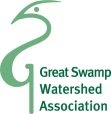In 1982, a large glass-and-steel dome called “Biosphere 2” was constructed, intended for the human colonization of Mars. It failed for that purpose, but it has been useful for studying planet Earth because it allows researchers to control variables and play out different scenarios in a way that can’t be done in the real world.
 |
| The University of Arizona's Biosphere 2 earth systems research facility in Oracle, AZ. Credit: flickr.com/photos/tim846 (Tim Bailey, CC Attribution) |
In 2009, according to Jim Robbins, author of the 2012 book The Man Who Planted Trees, two researchers moved twenty mature pine trees, five to six feet tall, into the dome and split them into two groups of ten. One group was placed in a chamber where conditions were equal to what they are today, and the other group was placed in conditions some seven degrees Fahrenheit warmer than it is now ---- roughly equal to the high end of the temperature rise scientists predict for the next century. Once the trees established themselves, researchers deprived both populations of water.
The human-induced drought killed the trees in the warmer chamber 28% faster than the trees in the chamber with normal temperatures. The conclusion of the researchers was that forest die-offs could increase by a factor of five if the climate warms seven degrees as predicted over the next century. Because droughts can kill trees faster when temperatures are warmer, they suggested that instead of one die-off in one hundred years, the number could increase by a factor of five! This is based on temperature increase alone. However, in addition to the effect of warmer temperatures on trees, we must consider the aggravating effect of warmer temperatures on disease and insects. In concert with water stress, disease and insects kill many more trees than drought alone.
Some scientists believe the earth is on track to see 20% of its tree species become extinct or be on their way to extinction by the end of the century. These scientists see droughts, heat waves, and forest fires of unprecedented ferocity, rapidly rising sea levels, and more storms with hurricane-force winds. While there have been mass extinctions before in the earth’s history, scientists say this one is different from the others. It is brought on largely by humans through their disturbance of the natural landscape, the introduction of exotic species of plants and animals, new pathogens (such as increased carbon pollution), and unsustainable exploitation of plant and animal species.
 |
| A view of trees damaged by black mountain beetles in the Black Hills National Forest in South Dakota. Credit: flickr.com (Chris M. Morris CC Attribution). |
To be more specific, giant forest die-offs have already begun in the Rocky Mountain West. In the last half century, the two-degree temperature rise that has occurred in the West has already begun to turn ecosystems inside out, and the anomalous behavior of insects is one of those changes. With only a small increase in normal temperature, tiny black mountain pine beetles (now constantly fly from May until October, instead of a mere two weeks each year. They are attacking trees, burrowing in, and laying their eggs for fully half the year. There is evidence that the beetles are now attacking immature trees, and that they are switching to other tree species. In some high places where the beetles had a two-year life cycle because of cold temperatures, it has changed to a one-year cycle. This means that their populations can increase more rapidly during warm droughts when their host trees are most stressed, resulting in more beetles doing a lot more damage.
A dying forest is problem enough, but when large landscapes die they become contributors to a warming climate, a cycle called a “positive feedback loop.” One of the most important things forests do for life on the planet is to capture carbon dioxide from the atmosphere and store it as plant tissue. Trees contain half of our terrestrial carbon stores, more than any other single source on land. Without forests, more carbon dioxide would remain in the atmosphere, causing more warming. When forests die or are cut down, they release their stored carbon dioxide into the atmosphere; in fact, such events are said to comprise 20% of annual carbon emissions.
While we cannot cure global warming, we may be able to slow it down. Understanding the causes and seeing whether we can adapt better to the effects is worth thinking about today as we face this inevitable change in nature.





